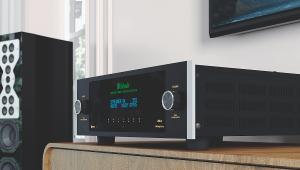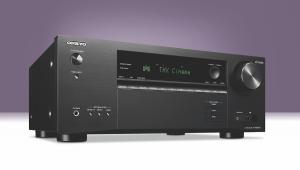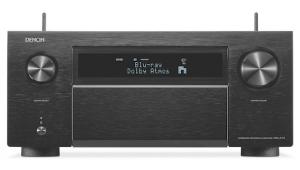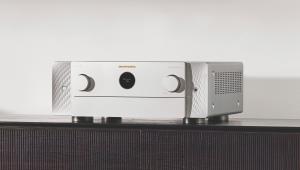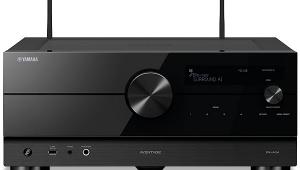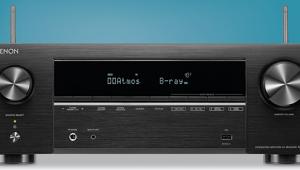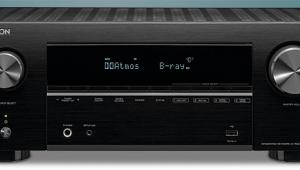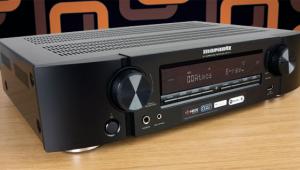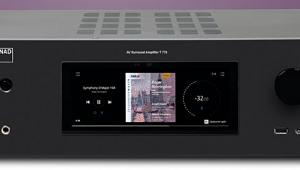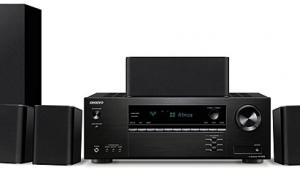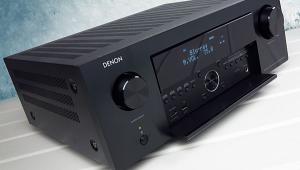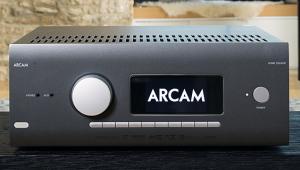Anthem MRX 740 AV Receiver Review
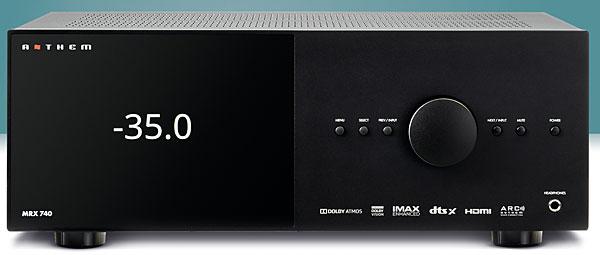
 Anthem has given its MRX AV receivers a long-overdue upgrade. Steve Withers takes the new seven-channel model for a spin
Anthem has given its MRX AV receivers a long-overdue upgrade. Steve Withers takes the new seven-channel model for a spin
Anthem's range of AV processors and receivers finally get an update, and at some point in the past five years it looks like the Canadian manufacturer drew inspiration from the Scandinavians. The new models are elegant, minimalist, and a definite step up from the dated appearance of the previous generation. But are they just surface charm, or is more going on underneath?
Before we get into the nitty-gritty, let's run through the new lineup. It's headlined by the AVM 70 15.1-channel AV processor, followed by three AV 'receivers' (there's no radio tuner onboard): the MRX 1140 with 11 amp channels and 15.1 processing; the MRX 740 (tested here) with seven channels inside and processing for 11.1; and the MRX 540 with five built-in amplifiers and 7.1-channel processing.
Aside from the differing amplification and processing capabilities, they all have the same suite of features, including decoding for Dolby Atmos, DTS:X and IMAX Enhanced. They also support AirPlay 2, Chromecast, Spotify Connect and Roon, plus Anthem's excellent ARC Genesis room correction software (more on that later).
Paint It Black
The new look is a two-tone winner, with the left side of the receiver's front facia finished in black glass, while the right is matte black. There's a big volume dial with buttons on either side for power, mute, inputs, and navigating the menus, but the only other feature on the front is a full-sized headphone jack.
While easy to read, the front display is somewhat disappointing. It provides minimal information, is rather prosaic, and has none of the colourful feedback found on the T 778 receiver from Canadian rival NAD. In fact, below the surface gloss, Anthem's menu system is essentially the same as the previous generation.
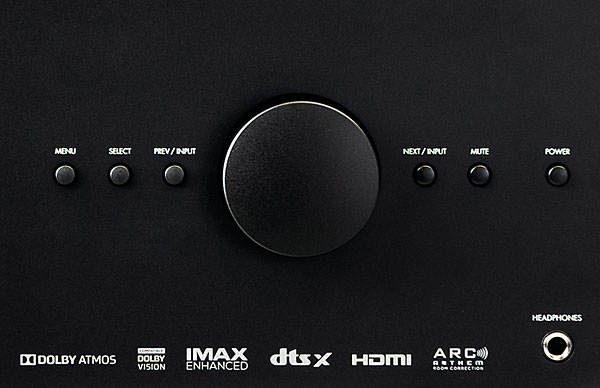
These menus are accessed via the front panel or remote control, appearing on the display and the screen – although neither is ideal. Thankfully, Anthem has introduced a new web-based interface that provides complete access to all the setup menus in a comprehensive and clearly laid-out fashion. In terms of initial setup, this is definitely the way to go.
For day-to-day use the zapper works just fine. Buttons are sensibly placed and kept to a minimum, with everything you need to effectively control the main and secondary zones. There's also a backlight for use in a darkened room.
As the mid-range model, the MRX 740 is clearly designed to give a taste of object-based audio using its onboard 5.1.2-channel system, while also providing the option for expansion up to a 7.2.4 configuration if desired.
For those who fancy taking the latter route, Anthem offers a trio of power amps with matching styling: the two-channel MCA 225, the three-channel MCA 325, and the five-channel MCA 525. Bizarrely Anthem doesn't make a four-channel version, which is what you actually need to expand the MRX 740 to 11 channels and take the MRX 1140 up to the full 15.
With this new AVR generation, you can reassign the onboard channels in a number of different ways, allowing unused power to bi-amplify demanding front speakers, drive surrounds or height speakers, or even cover a second zone. For example, if you add a more capable two-channel power amp for front left and right, you can reassign those built-in amplifier channels elsewhere.
Speaking of which, the MRX 740 sports five channels of Class A/B rated at 170W into 6 ohms or 140W into 8 ohms (both measured with two channels driven), and an additional two channels of Class B rated at 75W (6 ohms) and 60W (8 ohms) when driven together.
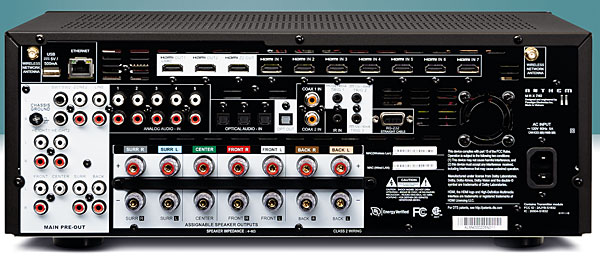
On the back panel are seven HDMI inputs and three HDMI outputs. One output is dedicated to second zone AV, the main one supports eARC, and all ports are compliant with a full house of HDR formats (HDR10, HLG and Dolby Vision). Anthem is also planning an HDMI 2.1 8K upgrade early next year, ensuring a degree of future-proofing.
Other connections include five analogue inputs, three optical digital inputs, a pair of coaxial digital inputs, and a service use-only USB port There are also IR input, 12V trigger and an RS232 connections. Anthem supports third-party control solutions like Control4 and Crestron.
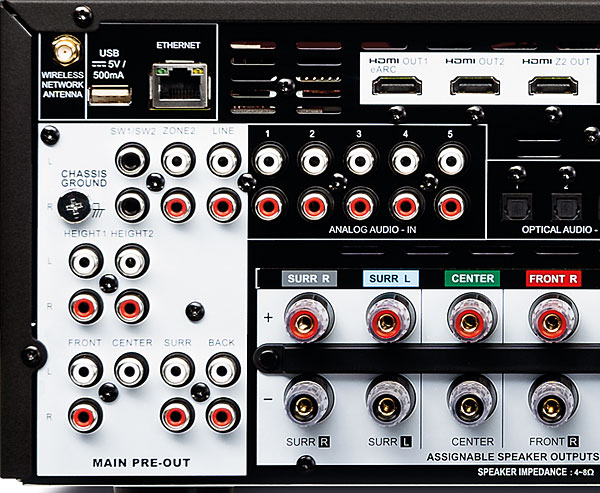
Dual antennas aid Wi-Fi and Bluetooth, and Ethernet is on hand if prefer a wired hookup. Network installation is relatively straightforward, although you'll need the Google Home app to set up the wireless connection.
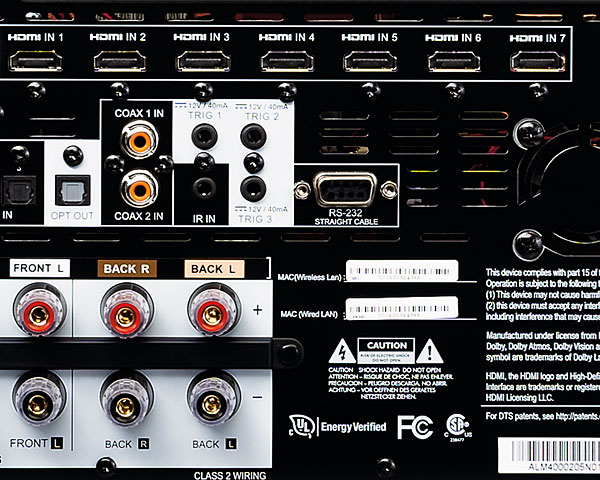
Aside from that it's just a case of connecting source devices, choosing the system layout (the MRX 740 defaults to 7.1), and wiring up the speaker terminals, which support different configurations depending on how you assign the channels. There are two subwoofer outputs (although both run off the same mono signal), and 11.1-channel pre-outs.
ARC Attack
One of the big selling points of an Anthem processor or receiver is the inclusion of ARC (Anthem Room Correction). The MRX 740 supports the latest iteration – ARC Genesis – and includes an upgraded calibrated microphone (based on the popular UMIK-1), along with a USB cable and mic stand.
 |
Home Cinema Choice #351 is on sale now, featuring: Samsung S95D flagship OLED TV; Ascendo loudspeakers; Pioneer VSA-LX805 AV receiver; UST projector roundup; 2024’s summer movies; Conan 4K; and more
|





